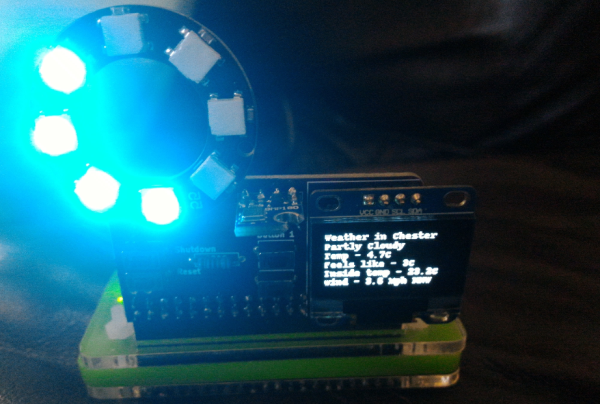We all know feature creep can be a problem in almost any project. A simple idea can often become unusable if a project’s scope isn’t clearly defined in the beginning. However, the opposite problem sometimes presents itself: forgetting to include a key feature. [Zach] had this problem when he built a Raspberry Pi magic mirror and forgot to build a physical reset/shutoff switch. Luckily he had a spare Amazon Dash button and re-purposed it for use with his Pi.
The Raspberry Pi doesn’t include its own on/off switch. Without installing one yourself, the only way to turn off the device (without access to the terminal) is to unplug it, which can easily corrupt data on the SD card. Since [Zach]’s mirror was already complete, he didn’t want to take the entire thing apart just to install a button. There’s already a whole host of applications for the Dash button, so with a little Node.js work on the Raspberry Pi he was able to configure a remote-reset button for his mirror.
This is a similar problem for most Raspberry Pi owners, so if you want to follow [Zach]’s work he has done a great job detailing his process on his project site. If you’re looking for other uses for these convenient network-enabled buttons, he also links to a Github site with lots of other projects. This pizza button is probably our favorite, though.




 This is however not merely a Pi stuffed inside the rear casing with a few holes for cables, instead he took away the substantial part of the DVD mechanism and mounted his Pi safely in a plastic box. Some USB extension cables bring all four USB sockets to the front panel through the DVD slot with a bit of Sugru to hold them in place. An HDMI panel-mount extension goes to the TV’s rear connector panel, as does a power switch for the Pi which is wired to a USB charger mounted on a trailing mains socket inside the case. The composite video from the Pi is wired to the TV’s AV in video socket.
This is however not merely a Pi stuffed inside the rear casing with a few holes for cables, instead he took away the substantial part of the DVD mechanism and mounted his Pi safely in a plastic box. Some USB extension cables bring all four USB sockets to the front panel through the DVD slot with a bit of Sugru to hold them in place. An HDMI panel-mount extension goes to the TV’s rear connector panel, as does a power switch for the Pi which is wired to a USB charger mounted on a trailing mains socket inside the case. The composite video from the Pi is wired to the TV’s AV in video socket.
















